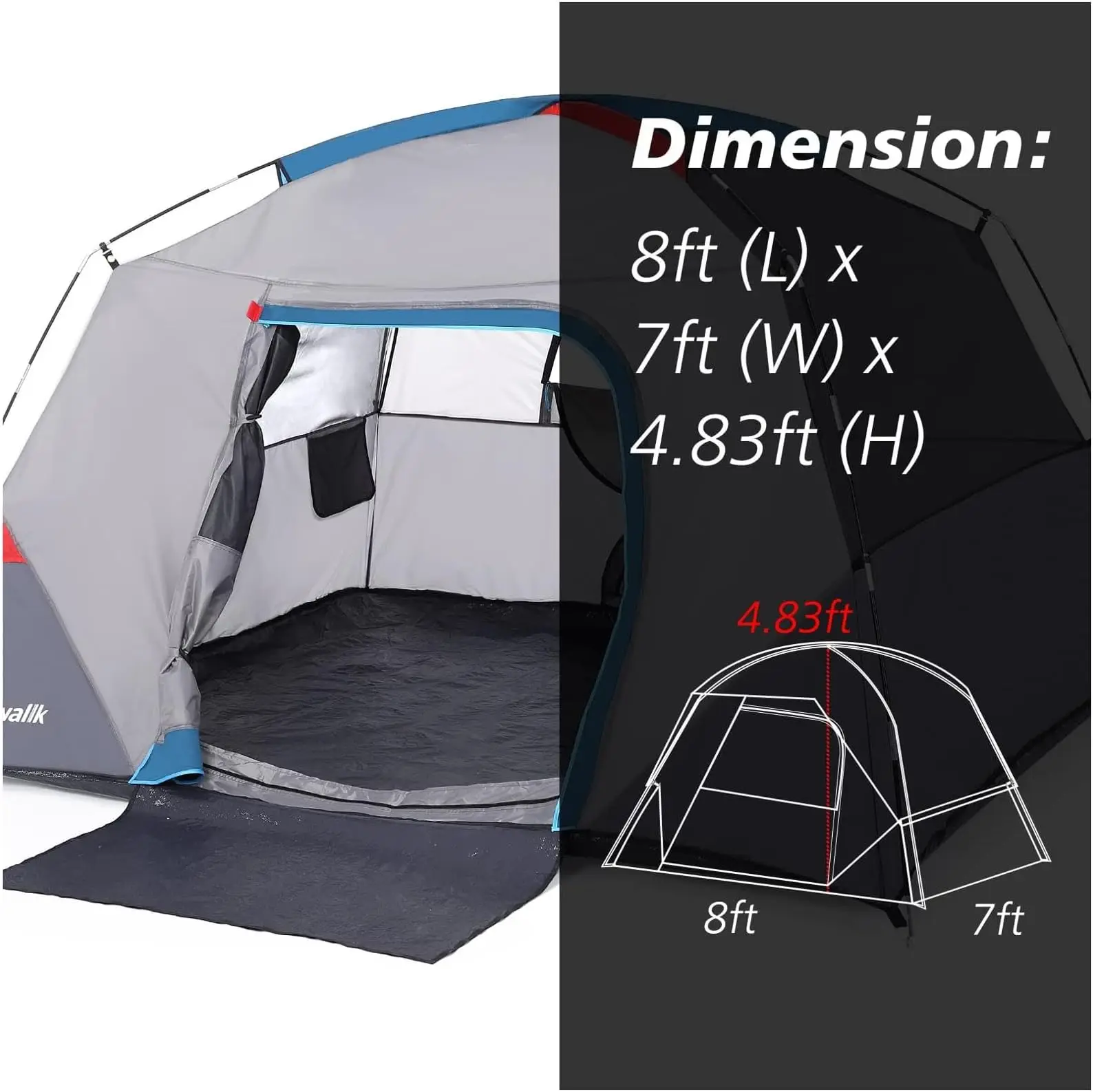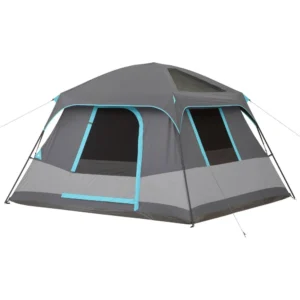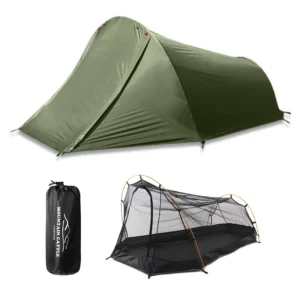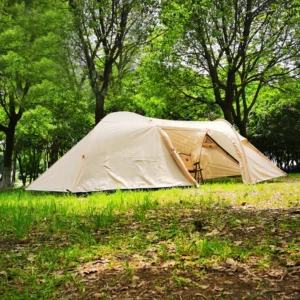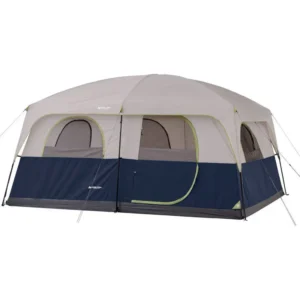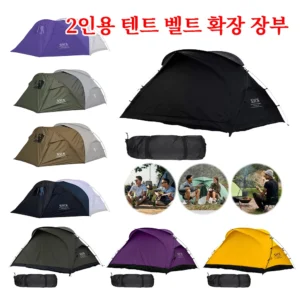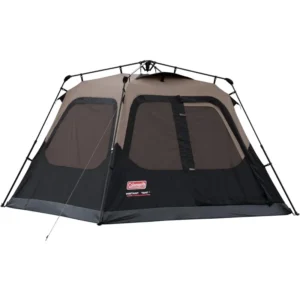1. Introduction: Understanding Your Tent Options
Choosing the right tent can make the difference between a memorable outdoor adventure and a frustrating wilderness experience. Among the many options available to outdoor enthusiasts today, instant tents and dome tents stand out as two of the most popular but distinctly different choices.
Instant tents offer remarkable setup speed and convenience, while dome tents provide time-tested reliability and versatility. Each design comes with its own set of advantages and limitations that can significantly impact your camping experience.
At Explore Elements, we’ve rigorously tested countless tent models across varied terrains and weather conditions. Our experience has shown that there’s no one-size-fits-all solution – the right tent depends entirely on your specific needs, camping style, and priorities.
In this comprehensive comparison, we’ll examine everything from setup time and portability to durability and weather performance, giving you all the information needed to make an informed choice. Whether you’re a weekend warrior or seasoned backpacker, understanding the differences between shelter options for two campers will help you find your ideal outdoor home.
2. At a Glance: Key Differences Between Instant and Dome Tents
| Feature | Instant Tents | Dome Tents |
|---|---|---|
| Setup Time | 1-2 minutes | 8-15 minutes |
| Ease of Use | Very simple, often one-person | Moderate, easier with two people |
| Packed Size | Larger, bulkier | More compact, separable components |
| Weight | Heavier (7-25+ lbs) | Lighter options available (4-15+ lbs) |
| Weather Resistance | Good to moderate | Excellent (especially wind) |
| Durability | Good but complex repairs | Very good with simple repairs |
| Typical Cost | $80-$400+ | $50-$500+ |
| Ideal Uses | Car camping, festivals, quick trips | Versatile for various conditions, backpacking |
While this comparison provides a helpful overview, individual tent models may vary significantly in quality and features. The right choice ultimately depends on your priorities – whether you value the unmatched convenience of instant setup or prefer the tried-and-true reliability of a classic dome design.
Selecting the ultimate compact shelter for two requires understanding these key differences and how they align with your camping needs. The fundamental dome tent structure offers certain advantages that might outweigh convenience for some campers, while others might prioritize the rapid deployment of instant tents.
3. Understanding Instant Tents: The Convenience Champions
Instant tents represent a relatively recent innovation in camping gear, designed specifically to eliminate the frustration and time investment of traditional tent setup. They feature pre-attached pole structures that expand into position in one fluid motion – simply unfold, extend, and secure.
Key Features of Instant Tents
- Pre-assembled framework: Poles are permanently attached to the tent body
- Hub-based mechanisms: Central hubs connect multiple pole sections
- One-piece design: Entire tent often deploys as a single unit
- Varieties: Range from pop-up styles to cabin-style instant tents
Advantages
The primary appeal of instant tents is unmistakable: unparalleled convenience. Setup times typically range from 60 seconds to 2 minutes, making them perfect for campers who value efficiency. They eliminate the need to sort poles, thread sleeves, and puzzle through assembly instructions – a particular blessing when arriving at camp after dark or in poor weather.
The simplified design also makes instant tents exceptionally beginner-friendly. First-time campers can achieve successful setup without the learning curve associated with traditional tents, reducing one potential barrier to enjoying the outdoors.
Limitations
This convenience comes with tradeoffs. Instant tents are generally bulkier and heavier when packed, occupying significantly more car space. Their integrated pole systems make repairs more complex – a broken pole often means replacing an entire section or mechanism rather than simply inserting a splint or replacement segment.
While technology continues to improve, many instant tents still lag behind traditional designs in performance during severe weather, particularly high winds. The rigid, pre-connected structure that enables quick setup can also create vulnerability points during storms.
Those interested in learning proper instant tent pitching techniques will find the process straightforward, and our collection of instant camping tents includes options for various group sizes and conditions.
4. Understanding Dome Tents: The Versatile Classics
Dome tents feature a time-tested design that has become synonymous with camping for good reason. Their structure relies on flexible poles that cross at the top to create a dome-shaped frame, supporting the tent fabric from within.
Key Features of Dome Tents
- Flexible crossing poles: Usually two or more poles that intersect at the center
- Sleeves or clips: Connect tent body to the pole structure
- Freestanding design: Can be picked up and moved when assembled
- Varieties: Basic dome, extended dome, and geodesic (with additional pole crossings)
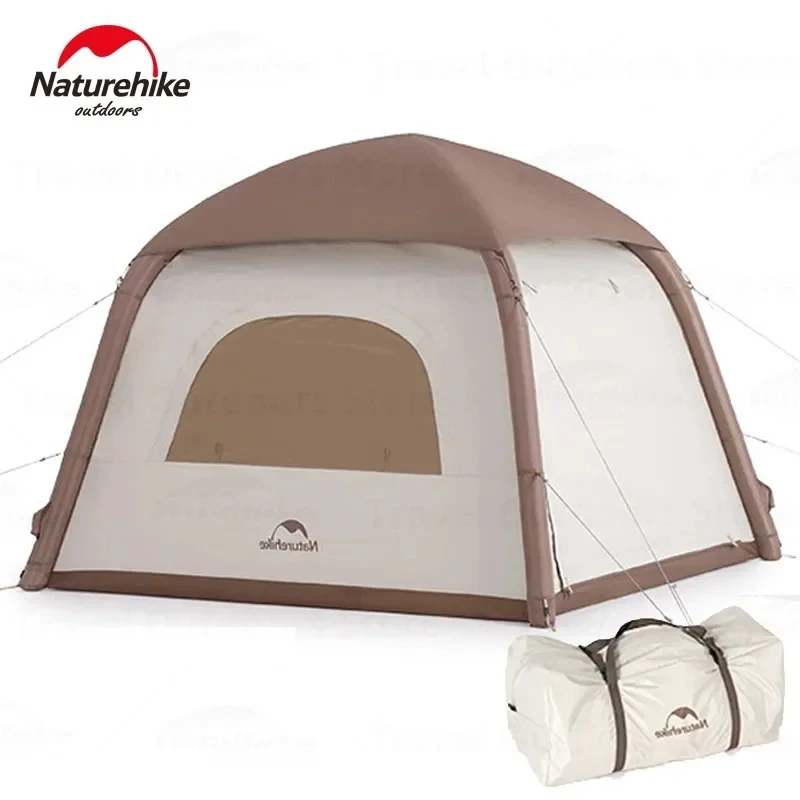
Advantages
The dome tent’s enduring popularity stems from its excellent balance of performance characteristics. The curved pole structure creates natural strength against wind and weather, shedding rain effectively and resisting collapse under snow load. This aerodynamic profile makes dome tents particularly suitable for exposed camping areas and unpredictable conditions.
Another significant advantage is the modular construction – poles can be replaced individually, and repairs are straightforward even in field conditions. The separable components also allow for more compact packing and weight distribution among group members for backpacking trips.
Limitations
The primary drawback of dome tents is setup time. While experienced campers can erect small dome tents quickly, the process typically takes 8-15 minutes and involves multiple steps: laying out the tent body, assembling and inserting poles, staking, and attaching the rainfly. Larger family-sized dome tents may require 20+ minutes and are easier with two people.
Dome designs also create sloping walls that reduce usable interior space, particularly around the tent’s edges. This can make the advertised capacity feel cramped in practice.
Our dome camping tent collection features models to accommodate various group sizes, and our dome tent capacity guide helps ensure you select appropriate dimensions for your needs.
5. Setup and Takedown: Speed vs. Process
The setup process represents the most dramatic difference between these tent types and is often the deciding factor for many buyers.
Instant Tent Setup
- Remove from carry bag and unfold on ground
- Extend legs until they click into locked position
- Pull corners out and stake down
- Attach rainfly if needed (often optional in fair weather)
The entire process typically takes 60-120 seconds for smaller models and remains under 5 minutes even for large family-sized instant tents. This incredible speed comes from the pre-connected pole system that eliminates the need to assemble and thread individual poles.
Dome Tent Setup
- Clear area and lay out tent body flat
- Assemble poles (usually color-coded)
- Insert poles through sleeves or attach via clips
- Raise tent by securing pole ends in grommets
- Stake corners and guy lines
- Attach rainfly and adjust for proper ventilation
For experienced campers, this process may take 8-10 minutes for small tents, while first-timers might need 15-20 minutes. Family-sized dome tents with multiple rooms can require 20-30 minutes even for practiced hands.
Takedown Comparison
Takedown presents a more complicated picture. While instant tents come down quickly (often under 2 minutes), they can be challenging to fold back into their original packed size. The rigid pole structure creates resistance when compressing the tent, sometimes requiring significant strength and practice.
Dome tents typically have a more straightforward takedown process – remove stakes, collapse poles, fold fabric – but require more time overall. The advantage comes in achieving a compact packed size more consistently.
Understanding how fast you can pitch a two-person instant tent might influence your decision, especially for trips with frequent location changes. Our selection of easy setup camping tents includes options that balance convenience with performance.
6. Portability and Storage: Weight, Size, and Transport Considerations
How you’ll transport your tent and where you’ll store it between trips significantly impacts which design makes more sense for your situation.
Weight Comparisons
Instant tents are typically heavier than comparable dome tents due to their integrated pole systems and hub mechanisms. For example:
- 2-person instant tent: 7-12 pounds
- 2-person dome tent: 4-7 pounds
- 6-person instant tent: 15-25+ pounds
- 6-person dome tent: 12-20 pounds
This weight difference becomes critical for backpackers who carry their gear over long distances but matters less for car campers or those setting up a base camp.
Packed Size and Shape
Instant tents almost always pack larger than their dome counterparts, with most folding into wide, flat packages rather than the traditional cylindrical tent bag. This larger packed size can consume valuable cargo space in vehicles and makes storage more challenging between trips.
Dome tents offer better space efficiency when packed, with poles, stakes, and fabric separable for optimal arrangement in backpacks or storage containers. This modular nature also allows weight distribution among multiple hikers.
Transportation Considerations
For car camping, an instant tent’s extra bulk and weight present minimal disadvantages. The convenience of quick setup often outweighs these factors entirely.
For backpacking, canoe trips, or any adventure requiring human-powered transport, dome tents typically make more sense. Their lighter weight and more compact packed size translate directly into reduced physical strain over miles of travel.
Mastering efficient tent packing tips can help maximize available space regardless of which style you choose, though dome tents generally offer more flexibility in this regard.
7. Durability and Longevity: Built to Last?
When investing in camping equipment, longevity becomes an important consideration that affects both value and reliability during trips.
Structural Considerations
Dome tents have fewer moving parts and mechanical connections, resulting in fewer potential failure points. Their simple pole-and-sleeve design has proven durable across decades of use in varied conditions. When components do wear out or break, replacements are standardized and widely available.
Instant tents introduce additional complexity with their hub systems, hinges, and permanently attached poles. These mechanical parts create more opportunities for failure, particularly after repeated use. While quality has improved significantly in recent years, the integrated nature of these systems means that when something does break, repairs often require specialized parts or professional service.
Common Failure Points
For instant tents:
– Hub connections where multiple poles join
– Hinged joints in extendable poles
– Locking mechanisms that secure poles in position
For dome tents:
– Pole ferrules (connecting sections)
– Fabric stress points near pole clips or sleeves
– Zipper tracks on doors and windows
Material Quality
Both tent types utilize similar fabrics and waterproofing technologies, with quality varying primarily by price point rather than design type. Higher-end models of both styles feature more durable materials, reinforced stress points, and better weather protection.
For campers who prioritize durability and reliable protection in varied conditions, our waterproof camping tents collection includes options engineered for exceptional performance and longevity.
8. Weather Performance: Protection When It Counts
When unexpected weather strikes, your tent’s design significantly impacts comfort and safety.
Wind Performance
Dome tents excel in windy conditions due to their aerodynamic shape. The curved poles disperse wind pressure across the structure rather than concentrating force on flat surfaces. Advanced geodesic designs with multiple crossing poles can withstand remarkable wind speeds, making them the go-to choice for mountaineering and exposed-site camping.
Instant tents typically feature more vertical walls that catch wind more readily. While quality instant tents can certainly handle moderate conditions, they generally show more movement and stress under high winds. Their rigid pole connections also have less flex to absorb gusts, potentially leading to damage in severe weather.
Rain Protection
Both tent types can provide excellent rain protection when properly designed and set up. The key differences lie in:
- Rainfly coverage: Dome tents typically feature full-coverage rainflies that extend to the ground, while some instant tents use partial rainflies that leave sections of the tent body exposed
- Seam positioning: Dome designs often place fewer seams along the roof, reducing potential leak points
- Water runoff: The curved shape of dome tents naturally sheds water, while the boxier shape of many instant tents can allow water to pool
Seasonal Suitability
Most recreational instant tents are designed as 3-season shelters, best suited for spring through fall camping in moderate conditions. While some premium models offer enhanced weather resistance, very few instant tents are designed for winter use or extreme conditions.
Dome tents span the full range from light summer tents to robust 4-season models capable of handling snow loads and winter storms. The geodesic variations, with additional crossing poles, provide the highest level of stability in challenging environments.
Understanding the specific advantages of two-person dome tents can be particularly valuable when planning trips to regions with unpredictable or challenging weather patterns.
9. Interior Space and Comfort: Living in Your Temporary Home
The livability of your tent directly impacts your camping enjoyment, especially during extended stays or poor weather when you’ll spend more time inside.
Floor Space Utilization
Instant tents, particularly cabin-style models, offer nearly vertical walls that maximize usable floor space. This box-like design means the floor dimensions closely match the usable interior space, allowing you to place sleeping pads and gear right to the edges.
Dome tents feature sloping walls that reduce usable floor space around the perimeter. While a dome tent may have the same floor dimensions as an instant tent, the usable space where you can sit up comfortably is smaller due to the curved ceiling.
Headroom and Movement
Cabin-style instant tents excel in providing standing room throughout most of the tent, with peak heights of 6+ feet common even in medium-sized models. This vertical clearance allows adults to stand fully upright when changing clothes or organizing gear.
Traditional dome tents provide maximum height only at the center, with headroom decreasing significantly toward the walls. This design requires more stooping and careful movement inside the tent.
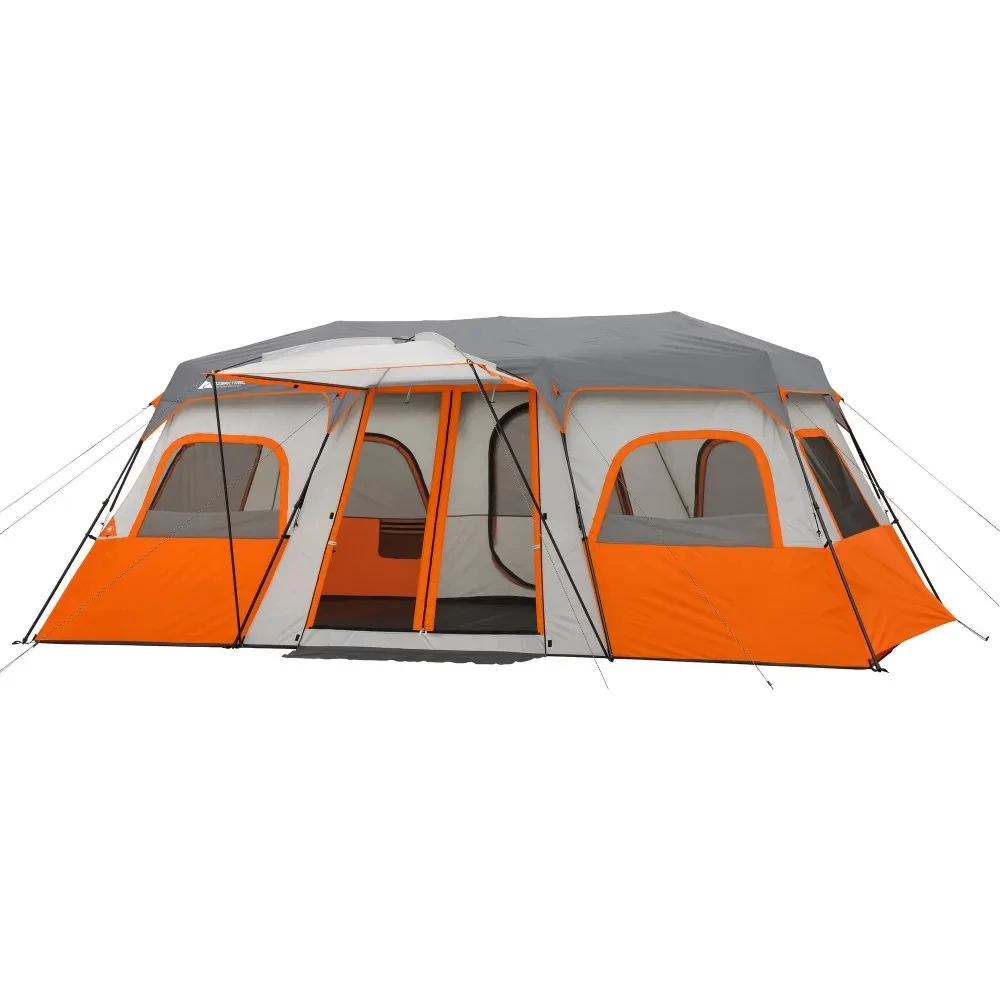
Interior Organization
Both tent types offer similar interior features like storage pockets, gear lofts, and lantern hooks. The difference lies more in individual models than in the tent categories themselves.
For families or groups requiring enhanced privacy and space management, our two-room camping tents provide separated living areas while maintaining weather protection. Those prioritizing comfort and ease of movement might appreciate our selection of tall stand-up camping tents with generous vertical clearance.
10. Cost and Value: Investment Considerations
Initial purchase price represents just one aspect of the total value equation when selecting a tent.
Price Range Comparisons
Entry-level instant tents typically start around $80-100 for smaller sizes, with premium models reaching $300-400+. The convenience technology and integrated components contribute to higher baseline costs.
Dome tents offer more price diversity, with basic models available from $50-70 and premium versions ranging from $200 to $500+ depending on size, materials, and specialized features.
Value Factors Beyond Price
When assessing value, consider:
- Expected lifespan: Quality dome tents often last 7-10+ years with proper care, while instant tents typically average 5-7 years due to more complex mechanical components
- Versatility: Dome tents generally adapt to more diverse conditions and camping styles
- Repair costs: When damage occurs, dome tents usually cost less to repair thanks to replaceable individual components
Cost-Per-Use Calculation
For weekend campers heading out 4-5 times annually, the convenience of an instant tent often justifies any price premium or shorter lifespan. The time saved during each setup and takedown accumulates significantly over years of use.
For frequent campers logging 20+ nights annually, especially in varied conditions, the durability and repair advantages of dome tents may provide better long-term value despite the additional setup time.
Tall / Stand Up Camping Tent, Two Room Camping Tent
$407.93 Select options This product has multiple variants. The options may be chosen on the product pageCompact Backpacking Tent, Lightweight Backpacking Tent, Waterproof Camping Tent
$335.52 Select options This product has multiple variants. The options may be chosen on the product pageCamping Tent with Vestibule, Waterproof Camping Tent
Price range: $407.89 through $479.48 Select options This product has multiple variants. The options may be chosen on the product page- $476.52 Select options This product has multiple variants. The options may be chosen on the product page
Backpacking Tent with Vestibule, Trekking Pole Backpacking Tent, Waterproof Camping Tent
Price range: $271.99 through $519.52 Select options This product has multiple variants. The options may be chosen on the product pageEasy Setup Camping Tent, Instant Camping Tent
Instant Cabin Tent Double Layer Canvas 1-Minute Setup Spacious Family Camping Shelter with Air Vents$308.10 Select options This product has multiple variants. The options may be chosen on the product page
11. Best Use Scenarios: Matching Tents to Your Adventures
Different camping scenarios create distinct shelter requirements. Here’s how each tent type performs in specific situations:
Family Camping with Children
Best Choice: Instant Cabin Tents
Why: Quick setup while managing children, spacious interior with standing room, separate rooms in larger models, less technical complexity for busy parents
Viable Alternative: Extended Dome Tents with Vestibules
Why: Better weather protection for extended stays, potentially more durable for rough use by kids
Festival Camping & Weekend Getaways
Best Choice: Instant Tents
Why: Ultra-fast setup maximizes enjoyment time, quick takedown when departing, adequate protection for typically short-duration stays
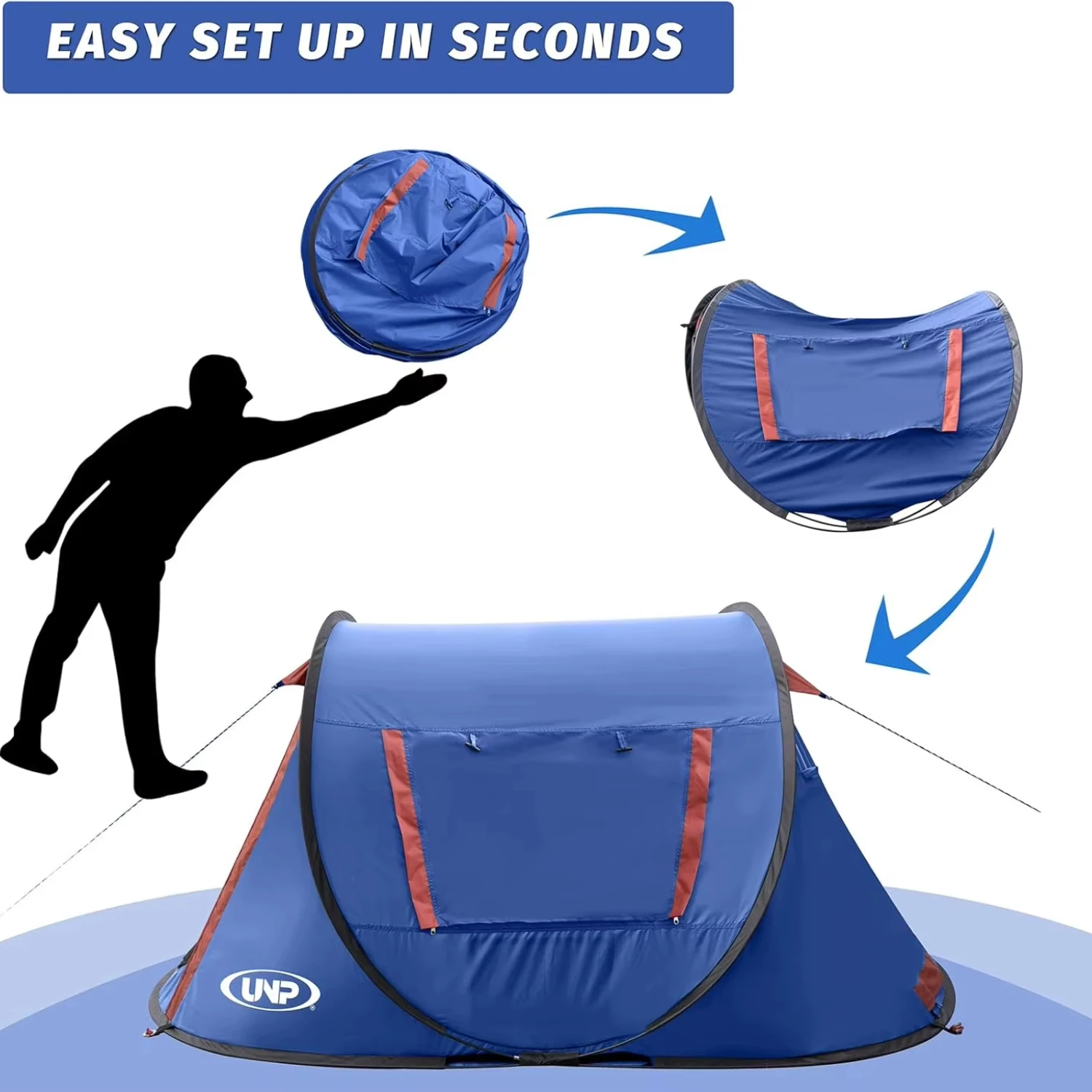
Backpacking & Wilderness Expeditions
Best Choice: Dome Tents
Why: Significantly lighter weight, smaller packed size, better stability in unpredictable backcountry weather, simpler field repairs
Car Camping Road Trips
Best Choice: Hybrid Decision
If prioritizing setup/takedown speed: Instant Tent
If prioritizing weather performance: Dome Tent
Extreme Weather Camping
Best Choice: Geodesic Dome Tent
Why: Superior stability in high winds, better snow-shedding capability, time-tested performance in challenging conditions
For those seeking versatile options for shorter adventures, our compact instant tents for weekend adventures provide an excellent balance of convenience and functionality without excessive bulk.
12. Making Your Decision: A Practical Framework
To determine which tent style best suits your needs, consider these key questions:
1. What is your primary camping style?
- Car camping within 100 feet of vehicle → Instant tent advantage
- Backpacking or carrying gear long distances → Dome tent advantage
- Mixture of both styles → Consider your most frequent use case or owning both types
2. What weather conditions will you typically face?
- Mostly fair weather, occasional light rain → Either type works well
- Frequent rain, moderate winds → Dome tent advantage
- Extreme conditions (high winds, snow) → Geodesic dome tent essential
3. How important is setup speed?
- Critical priority → Instant tent clearly better
- Nice but not essential → Either type works
- Willing to invest time for better performance → Dome tent better value
4. How much space do you have for transport and storage?
- Very limited space → Dome tent packs smaller
- Adequate vehicle and home storage space → Either works
5. What is your camping frequency?
- Occasional use (3-5 times yearly) → Convenience of instant tent may outweigh durability concerns
- Frequent use (10+ times yearly) → Long-term durability of dome tent may provide better value
Understanding whether a 2-person tent is actually big enough for your needs is another important consideration that applies to both tent types, as manufacturers’ capacity ratings often assume minimal personal space and gear storage.
13. Maintaining Your Tent: Care Tips for Longevity
Proper maintenance extends the life of any tent, but each design has specific care requirements:
Universal Tent Care Tips
- Always clean and completely dry tent before storage
- Store loosely in a cool, dry place (not compressed in stuff sack)
- Use a ground cloth to protect the floor from abrasion
- Clean zippers regularly and lubricate if needed
- Reapply waterproofing treatments every 1-2 seasons
Special Considerations for Instant Tents
- Exercise hub mechanisms and joints periodically during off-season
- Deploy carefully to avoid stressing connection points
- Check locking mechanisms before each trip
- Avoid forcing components when setting up or taking down
- Take extra care with metal components to prevent bending or warping
Special Considerations for Dome Tents
- Inspect pole sections for hairline cracks before trips
- Replace shock cord when elasticity diminishes
- Support poles during high winds rather than letting the tent absorb all stress
- Carry pole splints for field repairs
- Ensure even tension when staking to prevent uneven stress
With proper care, quality tents of either design can provide many seasons of reliable service, protecting your investment and ensuring reliable shelter when you need it most.
14. Frequently Asked Questions About Instant and Dome Tents
Are instant tents truly waterproof?
Quality instant tents can be waterproof, but they typically have more seams and potential entry points for water than dome tents. Look for fully-taped seams, adequate rainfly coverage, and proper hydrostatic head ratings (1500mm+) for reliable water resistance.
Can one person set up a large dome tent?
Yes, one person can set up most dome tents up to 6-person capacity, though it’s more challenging. The key is securing the first two poles in an X-pattern to create a freestanding structure, then adding remaining poles. Very large family tents are significantly easier with two people.
How long do instant tent mechanisms usually last?
With proper care, instant tent mechanisms typically last 5-7 years of regular use. Premium models may last longer, while budget options or those exposed to harsh conditions may show wear sooner. The most common failure points are the hub connections and locking mechanisms.
Are dome tents better for windy conditions?
Yes, dome tents generally outperform instant tents in windy conditions. Their curved, aerodynamic shape and flexible pole structure better disperse wind forces. Geodesic dome tents with multiple crossing poles offer the best wind resistance of all recreational tent designs.
What’s easier to pack away, an instant tent or a dome tent?
Dome tents are generally easier to pack to their original size, as the components separate for efficient packing. Instant tents, despite quicker takedown, can be challenging to fold to their original packed size due to the rigid integrated pole structure.
Can I use an instant tent for backpacking?
While some smaller instant tents are marketed for backpacking, traditional dome tents are almost always lighter and more compact. Most instant tents are too heavy and bulky for comfortable backpacking, especially for trips longer than a couple of miles.
How do tent warranties differ between types?
Warranty terms vary more by manufacturer than by tent type. However, dome tent warranties typically cover more repair scenarios, as their simpler design has fewer mechanical components to fail. Always check specific warranty coverage for poles, fabric, and waterproofing before purchasing.
Are there instant tents designed for extreme weather?
Some premium instant tents offer enhanced weather protection, but very few are designed for true extreme conditions. For winter camping, high elevation, or severe weather environments, specialized 4-season dome or geodesic dome tents remain the standard recommendation from most outdoor experts.
15. Conclusion: Finding Your Perfect Shelter
The choice between an instant tent and a dome tent ultimately comes down to your personal priorities and camping style. Both designs offer distinct advantages that make them ideal for specific scenarios.
Instant tents excel at convenience and user-friendly setup, making them perfect for casual campers, families with young children, and those who prioritize simplicity. Their rapid deployment can transform the camping experience for people who find traditional tent setup frustrating or time-consuming.
Dome tents continue to set the standard for versatility, weather performance, and long-term value. Their time-tested design handles challenging conditions with confidence while offering lighter weight and more compact storage – advantages that become increasingly important as your adventures grow more ambitious.
Many experienced outdoor enthusiasts eventually own both types, selecting the appropriate shelter based on the specific trip parameters. This hybrid approach maximizes enjoyment across varied camping scenarios.
Whichever design you choose, quality matters significantly. A well-made tent of either type will deliver more satisfying performance than a poorly constructed alternative. Focus on finding the right balance of features for your specific needs, and you’ll enjoy countless nights under the stars in comfort and security.

